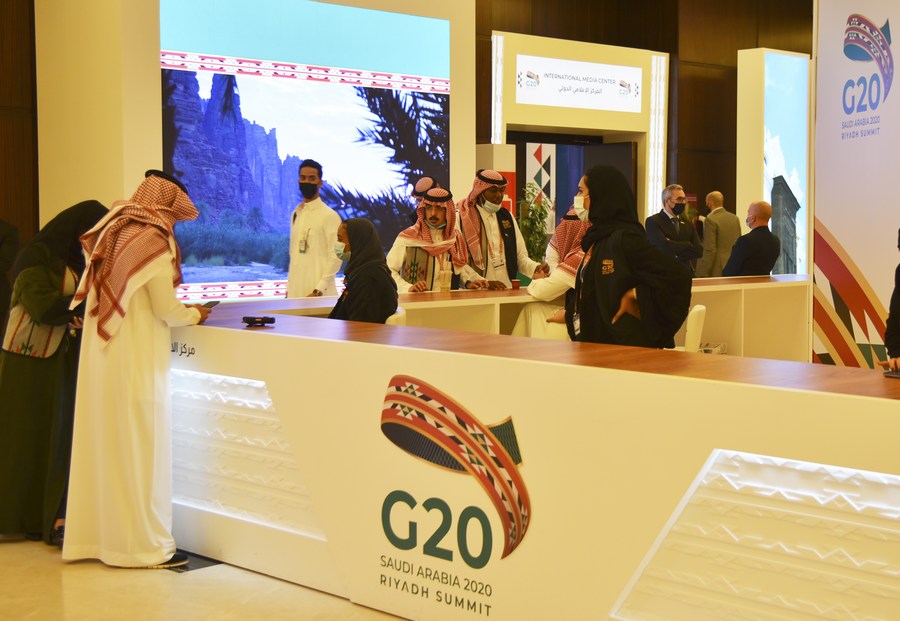Brighter prospects through Sino-Saudi cooperation
By Mulhem Mnahi Almasoud | chinadaily.com.cn | Updated: 2021-02-12 15:56

In this difficult, disturbed and unbalanced world, weakened by COVID-19, anything that can bring people together is helpful. This is the paramount duty of old friends. China and Saudi Arabia have long enjoyed close and friendly relations and share broad common interests.
Both have a long-standing tradition of helping one another in times of need. Following the 2008 Sichuan earthquake, Saudi Arabia was the largest aid donor to China, providing close to 40 million euros ($48.5 million) in financial assistance and an additional 8 million euros worth of relief materials. Along the same frame of mind, since the outbreak of COVID-19 in January 2020 in China, Saudi Arabia has offered assistance to China. The King Salman Humanitarian Aid and Relief Center, established in 2015 by King Salman bin Abdulaziz, has rushed to help China alleviate the suffering of those in need. A couple of months later, it was China's turn to provide medical supply to Saudi Arabia at a time heavily it was affected by the pandemic. The mutual support between both countries has remained consistent ever since.
Both countries agree that the world's driving forces should put more emphasis on development and diplomacy. Indeed, China and Saudi Arabia have a key role to play in promoting the principles set forth in the United Nations Declaration and ensuring the relevance and effectiveness of all measures to achieve that end. As such, both countries pledge to strengthen and enhance the WHO and, in general, to reinforce multilateral cooperation in all areas.
Thus, in their own countries, they have set a global goal of establishing a competitive, knowledge-based economy, capable of sustainable and steady growth with more and better jobs and greater social cohesion.
As an example, Saudi Vision 2030 is a strategic plan to reduce Saudi Arabia's dependence on oil, diversify its economy and develop public service sectors such as health, education, infrastructure, recreation and tourism. Within this framework, the role of international cooperation is pivotal in the implementation of this target. That is why Saudi Arabia was one of the first countries to respond positively to the Silk Road Economic Belt and 21st Century Maritime Silk Road Development Strategy initiatives launched by President Xi Jinping, which aimed to develop infrastructure projects and declining transportation costs to interlink cross-border trade deals between China and countries along the routes. Since 2016, Saudi Arabia is an active member of the Asian Infrastructure Investment Bank (AIIB) for which it subscribed an amount of $2.5 billions in shares. It makes sense. The Belt and Road Initiative offers great potential opportunities in terms of construction, energy cooperation, technology and finance. Both countries display solidarity in the fight against climate change.
In this and other related efforts, money is crucial. A joint initiative might be impending between China and Saudi Arabia to take the necessary steps forward. I would like to stress how topical the issuance of green bonds is. They are fixed-income products designed to fund green projects exclusively with positive impact on the environment -- for instance, smart cities, renewable energies, energy conservation and reduction of carbon emissions. They provide a substantial incentive to industrial companies to move on that direction and to clearly engage their manufacturing activities on sustainable investments.
As two major longtime partners, Saudi Arabia and China should gather their forces to launch this operation in favor of their companies. On one side, some Chinese firms need to seek financing to expand their activities overseas. On the other side, some Saudi organizations need more infrastructure such as equipment, buildings and communication. Therefore, we have to pool such requirements into a united common front. The issuance will help catalyze further growth of the green and sustainable bond market, particularly leveraging China and Saudi Arabia’s strengths as a leading green finance initiative and a new way of investing. In recent years, green bonds have witnessed a genuine success story. For example the Hong Kong government successfully issued an operation that has attracted orders more than five times their respective issuance sizes. Green bonds could be the flagship for both countries to prepare the future as well as a reference model in the way it combines the private and public sector, research and business.
As a central hub connecting Asia, Africa and Europe, Saudi Arabia is definitely a natural and privileged partner for Chinese companies. With their strong technological abilities and large experience, they are deeply welcomed to participate actively in major Saudi projects. Two deserve particular attention: Neom, the making of a $500 billion giant smart city, and the $200 billion Renewable Energy Project which would turn Saudi Arabia into a major producer of renewable energy.
As an old Chinese idiom suggests, both countries have to take the "road through Yang Guan" -- in other words, to move forward to a promising future of unbounded opportunities. At the end, deeper Sino-Saudi cooperation can brighten the prospects of each country's respective development. So, it's time for action.
Mulhem Mnahi Almasoud is the chairman of Invest-In-KSA.
























